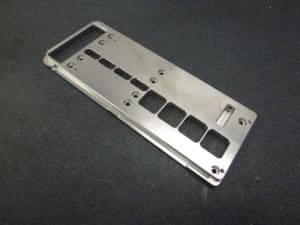Finding new ways to go out of their way to provide excellent customer service is something that is not new and trendy at SpecMaster. However, using alternative new materials is something that they are finding to be a recent industry trend. There are countless new materials available in most alloys. The latest and greatest materials (referred to as free machining materials) are jam-packed with excellent attributes such as:
- Increased production speed
- Maximum machine time
- Reduction of associated costs
The crew at SpecMaster are experts in machining these new materials. Not only are they skilled at the free machining of the materials, but they also do the research in order to find the best recommendation for each customer individually. Creating long-term relationships with their customers is what they care about deeply; therefore, they will always encourage and recommend the best alternative free machining material to fit each project and situation.
SpecMaster sources their material from only the top domestic or DFAR vendors and suppliers. All material comes with mill-spec tests and certificates of conformance. They have long-standing relationships with their vendors and always guarantee satisfaction as part of the trusted SpecMaster Process!
Note: “Machinability”, according to Wiki:
The term machinability refers to the ease with which a metal can be machined to an acceptable surface finish. Materials with good machinability require little power to cut, can be cut quickly, easily obtain a good finish, and do not wear the tooling much; such materials are said to be free machining. The factors that typically improve a material’s performance often degrade its machinability. Therefore, to manufacture components economically, engineers are challenged to find ways to improve machinability without harming performance.
Machinability can be difficult to predict because machining has so many variables. Two sets of factors are the condition of work materials and the physical properties of work materials.
The condition of the work material includes eight factors: microstructure, grain size, heat treatment, chemical composition, fabrication, hardness, yield strength, and tensile strength.
Physical properties are those of the individual material groups, such as the modulus of elasticity, thermal conductivity, thermal expansion, and work hardening.
Other important factors are operating conditions, cutting tool material and geometry, and the machining process parameters.

